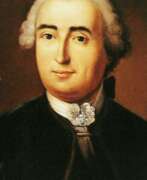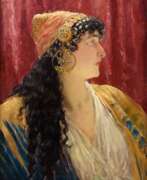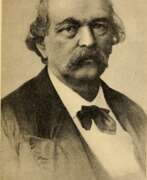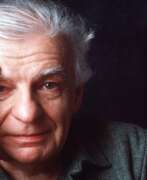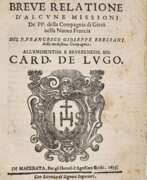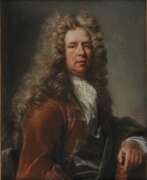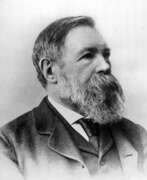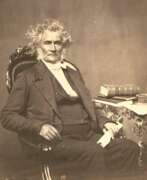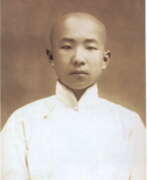Historians
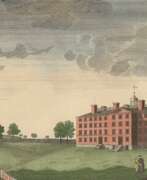

Paul Allen is an American editor, historian, and poet.
He attended Brown University and later moved to Philadelphia, where he was editor of The Port Folio, The Gazette of the United States, and The Federal Republican. Success came to Allen in Baltimore, where he served as editor until his death at the Baltimore Morning Chronicle newspaper. Paul Allen also joined the Delphic Club, and his epic poem Noah (1821) was a success.


Cornelius Gerardi Aurelius, also called Goudanus, was a Dutch humanist scholar, writer, and historian.
Aurelius was a permanent canon (monk) of the Augustinian monastic order and is one of the first humanists of the Netherlands in the 16th century. He wrote poetry, historiography, hagiography, political and theological works. Aurelius also corresponded with many of the famous men of his day, especially Erasmus.
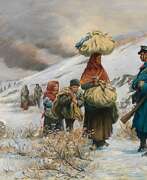

Rodolphe Auguste Bachelin was a Swiss landscape, history and portrait painter as well as a writer, historian and art critic.
He was interested in the Lombardy War of 1859 and in particular in the Franco-Prussian War of 1870 to 1871, which provided him with several subjects with its troop surge at Les Verrières. The Neuchâtel painter was greatly influenced by the writings of Rodolphe Töpffer and aspired to become a Swiss national painter.


John Bale was an English churchman, historian and controversialist, and Bishop of Ossory in Ireland. He wrote the oldest known historical verse drama in English (on the subject of King John), and developed and published a very extensive list of the works of British authors down to his own time, just as the monastic libraries were being dispersed. His unhappy disposition and habit of quarrelling earned him the nickname "bilious Bale".


Pierre-François Hugues d'Hancarville, better known as Baron d'Hancarville, was an art historian, writer, and adventurer who lived most of his life in Italy.
To advance from the merchant class to high society, he studied mathematics, physics, history, literature, ancient languages, and English, Italian, and German. Traveling in Europe, he presented himself as an aristocrat under various names. Under the name Baron d'Hancarville, he was known as a connoisseur and art dealer, which is apparently why he was approached by Sir William Hamilton (1731-1803), who was ambassador to the British embassy in Naples and had amassed a large collection of ancient vases. Before selling this collection to the British Museum in 1772, Hamilton asked d'Hancarville for help in creating a complete catalog of it in descriptions and illustrations. The baron also wrote a detailed essay.
This catalog, entitled The Complete Collection of Antiquities from the Cabinet of Sir William Hamilton, is itself a neoclassical masterpiece in French and English. Antique vases have never before been depicted with such precision and aestheticism.
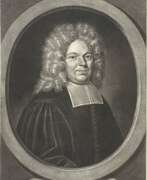

Jacques Basnage de Beauval was a French theologian and historian, diplomat and writer.
His father was a prominent lawyer and his grandfather and great-grandfather were pastors, Jacques studied theology and languages at the Academy of Saumur, then at Geneva and Sedan. In 1676, Jacques Basnage was appointed pastor at Rouen during the revocation of the Edict of Nantes, was forced to flee France for Holland, where he worked as a theologian, polemicist, historian, and diplomat in the service of the Grand Pensioner Hensius.
In 1717, on behalf of Holland, Basnage was sent to sign the treaty of the Triple Alliance (France, Holland, England). In the Annals of the United Provinces (1719-1726), compiled from the peace negotiations held at Münster, he displays breadth of vision, wisdom, and impartiality.
About 1719 Jacques Basnage was appointed historiographer of the Dutch states. He wrote several books on the Bible, the history of the Church, and the history of the Jewish people. Among the best known of these are his History of the Religion of the Protestant Denominations (1690), History of the Church of Jesus Christ to the Present Time (1699), written from Protestant positions, and History of the Jews (1706), as well as Jewish Antiquities, or Critical Notes on the Republic of the Jews (1713).


Platon Petrovich Beketov (Russian: Платон Петрович Бекетов) was a Russian publisher, book printer, historian and collector.
Platon Beketov was born into an old Russian landowning family, from 1798 he lived in Moscow, where he became interested in collecting and in 1801 opened his own printing house, which was considered one of the best in Moscow. Beketov raised the national printing industry to a worthy level. His books were made with great artistic taste and elegance, more than a hundred beautiful editions in all. A number of editions of Russian authors were printed here, among them Vasily Andreyevich Zhukovsky, Alexander Nikolayevich Radishchev, Mikhail Matveyevich Kheraskov and others. The printing house also printed the magazines "Friend of Enlightenment" (1805) and "Inventory of Books Printed at the Dependence of Platon Beketov's Printing House" (1806).
Beketov was passionate about old manuscripts, especially with portrait miniatures and autographs, and portraits of famous contemporaries. He collected an entire picture gallery, which formed the basis of two of his major projects - the publication "Pantheon of Russian Authors" (1801-1802) and the collection "Collection of Portraits of Russians, famous..." (1821-1824). (1821-1824). The texts for them were written by the publisher's friend and distant relative N.M. Karamzin.
Platon Petrovich Beketov was widely known in the circles of the Russian intellectual elite of the first half of the XIX century. In 1811 he was elected chairman of the Moscow Society of Russian History and Antiquities, a position he held until 1823.


Jeremy Belknap is an American clergyman, historian, and author.
Belknap was educated at Harvard College and has devoted his life to the Congregationalist Church. In addition, he served for many years as secretary to the New Hampshire Ministerial Convention. He traveled throughout the state in his service and at the same time collected information on New Hampshire history. The result of these years of work was The History of New Hampshire, published in three volumes between 1784 and 1792. This work is the first modern history written by an American.
Belknap also wrote and published American Biographies in two volumes (1794 and 1798), which brought him to the attention of intellectuals across the country. He became a member of the American Philosophical Society and the American Academy of Arts and Sciences. Belknap was also a founding member of the Massachusetts Historical Society, the first such society in America.


Alexandre Nikolayevich Benois (Russian: Алекса́ндр Никола́евич Бенуа́) was a distinguished Russian artist, art critic, and historian, celebrated for his pivotal role in the art world, particularly in painting and stage design. Born into a family deeply embedded in the cultural fabric of Russia, Benois was instrumental in the development of the Russian artistic movement at the turn of the 20th century. His contributions to art and culture extend beyond his vivid paintings; he was a founding member of the World of Art (Mir iskusstva), a significant art movement and magazine that sought to elevate Russian artistry on the global stage.
Benois' work is notable for its intricate detailing, vibrant use of color, and the ability to convey deep narratives within each piece. His designs for ballets such as "Petrushka" and "The Sleeping Beauty" remain iconic, showcasing his mastery over the fusion of visual art and performance. This synthesis not only enhanced the ballets’ visual appeal but also deepened the audience's engagement with the narrative. Museums and galleries around the world, including the Russian Museum in St. Petersburg and the Tretyakov Gallery in Moscow, house his works, underscoring his global recognition and the enduring appeal of his artistic vision.
For collectors and experts in art and antiques, Benois' oeuvre represents a fascinating exploration of early 20th-century Russian culture, art, and the avant-garde movement. His ability to blend traditional Russian themes with the modernist trends of his time makes his work a valuable study in the evolution of modern art. Those interested in the rich tapestry of Russian cultural history and the interplay between art and performance will find Benois' contributions invaluable.
To stay informed about new discoveries, sales, and auction events related to Alexandre Nikolayevich Benois, we encourage you to sign up for updates. This subscription is tailored specifically for enthusiasts eager to deepen their appreciation and understanding of Benois' legacy, ensuring you're the first to know about opportunities to acquire pieces connected to this luminary of Russian art.




Joachim Bouvet was a French Jesuit monk and missionary who worked in China.
Joachim Bouvet was one of six Jesuit mathematicians chosen by Louis XIV to travel to China as his envoys and work as missionaries and scholars. In 1687 in Beijing, Bouvet began this work, especially in mathematics and astronomy, and in 1697 the Chinese emperor Kangxi (1654-1722) sent him as ambassador to the French king. Kangxi expressed his wish that Bouvet should bring more missionary scientists with him. Thus, in addition to his scholarly work, Bouvet was also an accomplished diplomat and served as a liaison between the Chinese Emperor Kangxi and King Louis XIV of France.
Bouvet brought to France a manuscript describing Kangxi's life with an eye for diplomatic subtleties, as well as a collection of drawings depicting graceful Chinese figures in traditional and ceremonial dress. The first French edition of The Historical Portrait of the Emperor of China was published in Paris in 1697, and was subsequently translated and published in other languages. And Bouvet returned to China in 1699 with ten new missionaries and a collection of King Louis XIV's engravings for Emperor Kangxi. He remained in China for the rest of his life.


Edward Wedlake Brayley was a British writer, historian, archaeologist and topographer.
Notable among Brayley's works are A Topographical History of Surrey, Lambeth Palace, Topographical Sketches of Brighthelmston, and Londiniana. Braley often collaborated with the topographer and antiquarian John Britton in the creation of his books. The text in his books was illustrated with woodcuts and engraved steel plates.
Britton and Brayley's long-standing collaboration also resulted in the popular series "Beauties of England and Wales," published from 1801 to 1818. Several volumes were planned, dealing with the history and topography of England and Wales, illustrated with views of picturesque scenes and important places. The series eventually expanded to twenty-five large volumes, published over a period of nearly twenty years.


Charles Brockden Brown was an American writer, historian, and editor.
Brown took up literary endeavors early in life. In 1798, his first mystical and psychological novel, Wieland, was published. Brown also wrote the novels Ormond (1799), Edgar Huntley (1799), and Arthur Merwin (1799-1800).
Brown's works interweave fiction, history, fantasy, psychology, and liberal politics. Brown is considered the father of the American novel. His American-style Gothic novels pioneered and paved the way for two of the greatest early American writers, Edgar Allan Poe and Nathaniel Hawthorne.
Charles Brown also wrote a great deal of journalism on political, educational, and historical topics.


Edward Browne was a British physician, president of the College of Physicians, traveler, historian and writer.
Edward was the eldest son of the famous British scientist Sir Thomas Browne (1605-1682), received a Bachelor of Medicine degree from Cambridge later and a Doctor of Medicine degree from Oxford, and became a member of the Royal Society. In addition to medicine, his subjects of study included botany, literature, and theology. He lived in London and traveled throughout Europe visiting museums, churches, and libraries (Italy, France, the Netherlands, and Germany). In 1673 he published an account of his travels in Eastern Europe, notable for its scrupulous accuracy.
Edward Browne also published two other works: a historical treatise and biographies of Themistocles and Sertorius. He was physician to King Charles II of England and left many manuscript notes on medicine. The chronicle of his journey through Thessaly is a unique and valuable source of information about the region in the second half of the 17th century. He was admitted to the College of Physicians in 1675 and served as its president from 1704 to 1708.


Patrick Browne was an Irish physician and historian, traveler, naturalist and botanist.
Patrick Browne studied medicine in Paris, graduated from the University of Reims, continued his studies in Leiden, and then worked as a doctor at St. Thomas' Hospital in London. Subsequently, he lived for many years in the Caribbean, in Antigua, Santa Cruz, Montserrat and Jamaica, where he practiced medicine. He devoted all his spare time to the study of the natural history of the island. In 1771, Brown returned to Mayo County.
In 1756, Brown published A Civil and Natural History of Jamaica, his most significant work in terms of Carl Linnaeus's botanical nomenclature, which included new names for 104 genera.




Victor Yakovlevich Bunyakovsky (Russian: Ви́ктор Я́ковлевич Буняко́вский) was a Russian mathematician, teacher, historian of mathematics, vice-president of the Academy of Sciences in 1864-1889. He made a significant contribution to number theory.


Robert Byron was a British traveler, writer, historian and art historian.
Byron studied at Merton College (Oxford), in his final year of university he traveled to Greece and described it in the book "Europe in the looking glass" (1926). The work "Station. Athos, Treasures and People" (1928) focuses on the monasteries of Mount Athos, and "Byzantine Achievements" (1929) on classical Greek culture, Byzantine art and architecture. Byron's other publications include Essays on India (1931) and First Russia, Then Tibet (1933).
In the early 1930s, Robert Byron traveled extensively in India, Persia, Tibet, Russia, and elsewhere. His most famous work is The Road to Oxiana (1937), which was written after traveling from Italy to India and is devoted to researching the origins of Islamic architecture. The route took him through Palestine, Syria, and Iraq, after which Byron visited Kermanshah, Tehran, Tabriz, Mashad, Herat, Isfahan, Shiraz, Persepolis, Sultania, Mazare Sharif, Kabul, and others. This book is based on his diaries and combines erudition and fascination. An aesthete and architectural art historian, Byron described the region's great Islamic monuments in elegant, lexically rich prose. He also took his own photographs. This photographic archive is now in the Conway Library of the Courtauld Institute in London and is of great value.
Talented and versatile, full of strength Robert Byron died at the age of 36, when the ship on which he was traveling to Cairo as a special war correspondent, was hit by a German U-boat torpedo off the northern coast of Scotland.
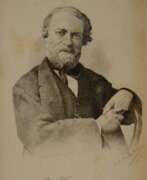

Théodore-Joseph Canneel was a Belgian portrait and genre painter, lithographer and art teacher. From 1830, Theodore Canneel learned the craft of lithography in the printing shop where his father worked. He then became a student of the painter Pieter van Hanselaere. From 1838 to 1841 he combined his profession with an education at the Koninklijke Acaďemie voor Schone Kunsten van Gent. He taught there from 1843. From 1848 to 1850 he undertook a study trip to France and Italy. On his return in 1850 he was appointed director of the Ghent Academy. In 1869 he became inspector at the Belgian drawing schools and academies. He also became a corresponding member of the Royal Academy of Sciences and Fine Arts of Belgium, the Koninklijke Academie voor Schone Kunsten van Antwerpen and an honorary member of the Philadelphia Academy. For the services rendered, he was appointed officer of the Belgian Order of Leopold.


Marcus Porcius Cato the Elder, also known as Cato the Censor (Censorius), was an ancient Roman soldier, politician, historian, and writer.
Originally from a plebeian family, Cato, driven by ambition, achieved high office and held various public positions. He was also a famous orator, engaged in the improvement of Rome. Cato was an active campaigner against vice and luxury, for which he earned the nickname Censor. He was also an innovator of Roman literature, a historian, the first significant Latin prose writer, and the first author of a history of Italy in Latin.


Coriolanus Cepio, or Coriolanus Cepico (Latin: Coriolanus Ceppico, Coriolanus Cepio) was a Venetian humanist nobleman of Croatian origin, historian, and military officer.
In Venice and Padua he studied humanities, navigation and military strategy, then worked as an official in his native Trogir. During the war of the Republic of Venice with Turkey, which lasted four years (1470-1474), Cepio participated in this expedition as commander of the Trogir galley. In Petri Mocenici imperatoris gestorium libri III (Venice, 1477) he described the military expedition and his experiences therein. Cepio describes in detail the military operations in the Levant, near the Ionian Islands, in the Peloponnesus and the Balkans, and in Asia Minor. He is especially interested in the conquest of Izmir, the attempts to set fire to the Gallipoli arsenal and the siege of Shkoder, the capture of Smyrna, the Venetian protectorate of Cyprus, and Scutari.
He covers the Venetian victories at Mochenigo very carefully. As a humanist, Cepio noticed everything that pertained to antiquity and ancient monuments. This book is one of the oldest printed works by Croatian authors.


Alfred Jean Andre Cluysenaar was a Belgian Portrait painter. Jean Alfred was a member of the Cluysenaar family, an artistic family from Brussels. He became the father of the painter André Cluysenaar. He studied in the Académie Royale des Beaux-Arts of Brussels in the atelier of Joseph Jaquet and François-Joseph Navez. He painted some important decorations in the Royal Zoo of Antwerp and in 1861-1876 he ornated the Aula in Ghent. Cluysenaar was famous for his monumental decorations of high quality. Awarded in the expositions of Brussels, Ghent, Paris Vienna and London. Some of his paintings are kept in the Royal Museum of Fine Arts Antwerp.


James Fenimore Cooper is an American writer and the founder of the Western genre.
Cooper is the first major American novelist, he wrote a whole series of novels from American life: "The Pioneers" (1823), "The Last of the Mohicans" (1826), "The Prairie" (1827), "The Pathfinder" (1840), "The Beastmaster, or the First Warpath" (1841). The author fascinatingly and vividly describes how Europeans waged wars among themselves on the American continent, involving Indian tribes in these strife. All of these works were a huge success in 19th century Europe and are still being reprinted today.
At the height of his popularity, Cooper spent seven years in Europe, and then returned to the United States, where he wrote works on military-historical and maritime themes until his advanced old age. Among them are "The Pilot, or Maritime History" (1823), "The Red Corsair" (1827).


Miguel Covarrubias, also known as José Miguel Covarrubias Duclaud was a Mexican painter, caricaturist, illustrator, ethnologist and art historian. Along with his American colleague Matthew W. Stirling, he was the co-discoverer of the Olmec civilization.


Francesco de Bourcard was a Swiss-born Italian scholar, historian and publisher.
De Bourcard devoted about twenty years, from 1847 to 1866, to the production of a voluminous work, The Uses and Customs of Naples, to which he engaged a large number of contributors, both writers, artists, and engravers.
The first of the two volumes was published in 1853. The books depict the customs of the time, the typical characters of the people, their daily lives, and a wide range of popular and religious festivals. Hundreds of lithographs are accompanied by explanatory texts.


Charles Corneille Auguste de Groux or Charles Degroux was a French painter, engraver, lithographer and illustrator. As he moved to Belgium at a young age and his whole career took place in Belgium he is usually referred to as a Belgian artist. His depictions of scenes from the life of the disadvantaged and lower-class people of his time mark him as the first Belgian social realist painter. These works made him the precursor of Belgian Realist artists such as Constantin Meunier and Eugène Laermans. De Groux worked in different media, including oil painting, watercolor, pastel, engraving and lithography. He started out as a painter of history and religious scenes in the Romantic style then prevalent in Belgium. He later developed his own realist style which shows the influence of Courbet as well as genre painters of the 17th century. De Groux' social realist works contain many religious overtones and references.


Romeyn de Hooghe was a Dutch painter, sculptor, engraver and caricaturist of the late Baroque period, writer and philosopher.
Hooghe became famous for his political caricatures of King Louis XIV of France and propaganda pamphlets in support of William of Orange. He portrayed the war against the French monarch and his allies as a struggle between freedom and religious despotism.
Romeyn de Hooghe was a superb engraver and created over 3,500 engravings during his lifetime. His most important work is Hieroglyphica of Merkbeelden der oude volkeren (Hieroglyphics or Symbols of the Ancient Peoples), where he appeared not only as a consummate master of engraving, but also as a historian, talented writer and philosopher. This book has long been regarded in Europe as one of the most authoritative sources on classical mythology. It contains 64 engravings illustrating all stages of the narrative of myths, ancient cults and beliefs, and the interpretation of scripture, a guide to medieval Europe.
Romeyn de Hooghe also illustrated books and painted large panels. During his lifetime he was widely recognized as a painter and sculptor not only in his own country but also in other European countries.


Edouard de Jans was a Flemish portrait and genre painter. Although he specialized in portraits, he also did Biblical scenes, history paintings and landscapes. In 1876, he received a scholarship from the Prix de Rome for his painting "Return of the Prodigal Son", which enabled him to travel throughout Europe, visiting France, Italy, Germany and Austria. When he returned to Antwerp in 1889, he was appointed a Professor at the Academy and held that position until his death.
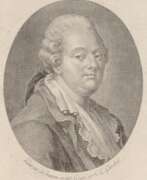

Jean-Benjamin de La Borde was a French composer, music historian, publisher and financier.
De La Borde played the violin and trained in composition. In 1748 he composed his first small opera, and in 1751 his opera Le Rossignol ou Le Mariage secret (The Nightingale or The Secret Marriage) was staged in Paris. The prolific composer went on to compose an average of 30 operas a year for 30 years, mostly of a comic nature.
De La Borde was also a prominent cultural figure of his time: he authored Essays on Music, a four-volume collection of songs for solo voice, and initiated the publication of the General and Private Description of France (1781-96).
For several years de La Borde was valet and favorite of Louis XV; he refused to leave France during the Revolution and was arrested and executed by guillotine on July 22, 1794.


François Robichon de la Guérinière was the French founder of classical dressage and a teacher.
La Guérinière was a pupil of Antoine de Vandale. In 1715, he received the title of royal knight and opened a riding school in Paris. At his school, de la Guérinière taught not only riding, but also "the complete science of the horse." De la Guérinière wrote two books, L'École de Cavalerie (1731) and Eléments de Cavalerie (1740), which are still considered the "Equestrian Bible," in which he devotes many pages to the care of the horse. Illustrations include plans and diagrams, anatomical and medical images, portraits of the author's most distinguished pupils, and a skeleton of a horse.
La Guérinière had a major influence on horse training tactics, riding and dressage practice. He is considered the founder of modern riding, his style is a clear reflection of the clarity, elegance and rigor of his teachings. In 1730, de la Guérinière was appointed director of the Tuileries Academy and held this position for the rest of his life.


Jacques de Lalaing was an Anglo-Belgian painter and sculptor, specializing in animals. Lalaing was raised in England until 1875, when he moved to Brussels. He trained as an artist under Jean-François Portaels and Louis Gallait at the Académie Royale des Beaux-Arts in Brussels. With the encouragement of Thomas Vinçotte and Jef Lambeaux, Lalaing began to sculpt in 1884. As a painter he continued to work in a realistic, naturalistic style, as a portrait painter and producing historical scenes. As a sculptor he produced allegorical bronzes and memorial art. Along with his fellow animalier sculptors Léon Mignon and Antoine-Félix Bouré Lalaing established a distinctively Belgian tradition of animal art, to which the flourishing Antwerp Zoo contributed inspiration. In 1896 Lalaing became a member of the Royal Academy where he had studied, and from 1904 through 1913 he served as its director. His works are represented in the collections of museums in Antwerp, Bruges, Brussels, Ghent and Tournai.


Alfred de Marbot, full name Baron Alfred-Charles-Adolphe de Marbot, was a French writer, historian and illustrator, a specialist in military uniforms.
He was born into the family of Lieutenant General Baron Marcelin Marbot (1782-1854). As a historian of the post-Napoleonic era, Marbot did extensive research and illustrated many types of infantry and cavalry uniforms, uniforms of the National Guard, volunteer and allied French Legions.
From 1836 to 1860, together with Baron Dunoyer de Noirmont (1816-1896), Alfred de Marbot published in Paris a series of "French military costumes from the organization of the first regular troops in 1439 to the present day", and in 1854 published the work "Synoptic tables of French infantry and cavalry and foreign regiments in the service of France from 1720 to 1789".


Dunoyer de Noirmont, full name Baron Joseph-Anne-Emile-Edouard Dunoyer de Noirmont, was a French writer, historian, and draftsman.
Baron Dunoyer de Noirmont wrote books on the history of hunting in France. Among his other famous works is the voluminous tome French Military Costumes, which describes the organization, arms, clothing, and equipment of the various army corps. It is the joint work of Dunoyer de Noirmont and the historian and artist Alfred de Marbeau (1812-1865). This monument to French military costume from 1439 to 1815 consists of hand-colored lithographed plates with explanatory texts.
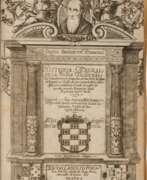

Antonio de San Román de Ribadeneyra, also San Román de Rivadeneira/Ribadeneira, was a Spanish Benedictine monk and historical writer.
He served at the monastery of San Zoil near Carrión de los Condes and wrote several historical books. In particular, an account of King Sebastião I's disastrous invasion of Morocco in 1578 and his death in battle entitled Jornada y muerte del Rey Don Sebastião de Portugal (1603). Antonio de San Román de Ribadeneyra also wrote A General History of Eastern India (1603). This historical work focuses on the Portuguese expeditions to Asia and the Americas, including a description of Christopher Columbus.
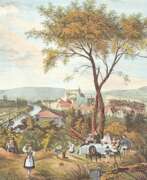

Maximilien de Ring was a nineteenth-century German artist of French descent. He is known as a painter, graphic artist, landscape painter, illustrator, lithographer, historian and archaeologist.
Maximilien de Ring was born in Bonn and worked in Paris, but concentrated on studying the history and culture of Southwest Germany and Alsace. He became famous for his paintings of scenic views of German castles, as well as his publications on history, archaeology, and architecture. He also illustrated his publications, including albums on Celtic and Roman settlements.


Maurice Denis, a French painter and writer, was an influential figure in the transition from impressionism to modern art. Born on November 25, 1870, in Granville, France, Denis's artistic journey began at the Académie Julian in Paris. Here, he met future collaborators like Paul Sérusier and Pierre Bonnard, with whom he later formed the Nabis group, a collective deriving its name from the Hebrew word "Nabi," meaning "Prophet".
Denis's style evolved from neoimpressionism, influenced by artists like Seurat, to a more decorative and colorful approach under the influence of Gauguin. This shift is evident in works like "Taches du soleil sur la terrace" (1890). He famously stated, "Art is no longer a visual sensation... it is a creation of our spirit," highlighting his belief in art as an idealistic expression, transcending mere imitation of nature.
Denis was also impacted by Japanese art, which influenced his compositions and styles, contributing to his unique and recognizable approach. His philosophy on art, encapsulated in his 1890 essay published in "Art et Critique," emphasized the importance of color and form in creating emotional depth, a notion that laid the groundwork for modernism. He argued that a painting's essence lies in its colors and composition, rather than its subject matter.
Throughout his career, Denis's work evolved towards a more classical approach. His involvement with the Ateliers d'Art Sacré, founded in 1919, demonstrated his interest in religious art and decoration. His notable works include "The Legend of Saint Hubert" (1897) and "The History of Music" for the Théâtre des Champs Elysées (1912-1913).
Tragically, Maurice Denis's life ended on November 13, 1943, when he was struck by a truck during the German occupation of Paris. However, his legacy endures through his contributions to modern art and symbolism, his influence on fellow artists, and his works displayed in various museums and galleries.
For collectors and art experts, Denis's work offers a unique glimpse into the evolution of modern art. His blend of symbolism, color, and form marks a significant shift in art history. To stay updated on new sales and auction events related to Maurice Denis's work, sign up for our newsletter. This subscription will keep you informed about the latest developments in the world of this remarkable artist.


Ludwig des Coudres was a German history and portrait painter. He also served as a Professor at the Academy of Fine Arts, Karlsruhe. His son, Adolf Des Coudres, was a well-known landscape painter. In 1836, he began studying architecture at the new polytechnic school. The following year, he was able to begin studies at the Kunsthochschule. Dissatisfied with the school's emphasis on the Nazarene style, he and two of his friends left to start their own studio and teach themselves. Shortly after, he went to study at the Academy of Fine Arts, Munich. In 1843, he went to spend two years in Rome. Then he studied at the Kunstakademie Düsseldorf. It was there he turned to portrait painting. In 1854 he became the first Director of the Academy in Karlsruhe, organizing its operations and establishing the curriculum.


Jacopo Filippo di Bergamo, or Giacomo Filippo Forèsti (Latin: Iacobus Philippus Bergomensis) was an Italian Augustinian monk, theologian and chronicler.
Jacopo di Bergamo was born into a noble family, received his ecclesiastical education at the local monastery, and early showed a penchant for literary work. After traveling in Europe, he took the tonsure and was abbot of monasteries, engaged in their improvement.
He is known as the author of a number of significant early printed works, a chronicler and biblical scholar. His Supplementum chronicarum (1483) is a universal chronicle that survived many subsequent editions. And De claris mulieribus, published in 1497, contains the first account of the voyage of the discoverer Columbus.


Francis Douce was a British antiquarian and curator of the British Museum, historian and writer.
Francis Douce studied law, but he loved books much more. He became a prominent member of the Society of Antiquaries and served as Keeper of Manuscripts at the British Museum from 1799 to 1811, but was forced to resign because of a quarrel with one of the trustees.
Francis Douce was an avid book collector and bibliophile. After leaving his post at the museum, he concentrated on adding to his collection of antiquarian books and manuscripts. And he also wrote scholarly works, most notably Illustrations of Shakespeare and Ancient Manners (1807) and A Dissertation on the Various Variants of the Dance of Death (1833). When Douce died in 1834, he left his extensive and valuable book collection of over 19,000 printed works to the Bodleian Library in Oxford.


Edward Dujardin was a Belgian painter and art teacher. He began his studies at the Royal Academy of Fine Arts (Antwerp), under Gustaf Wappers. From 1841, he taught figure drawing and placement at the Academy. He painted historical events, Biblical scenes, and portraits, and was in great demand for decorating public celebrations.


William Dunlap was an American playwright, theater director, artist, and historian.
William Dunlap was a pioneer of the young country's theater. He directed two of New York City's earliest and most famous theaters, the John Street Theater and the Theater in the Park. During his lifetime he directed over sixty plays, most of which were adaptations or translations of French and German works. But among them were some original ones based on American themes with American characters.
In 1832 Dunlap published A History of the American Theater in two volumes. In 1825, Dunlap co-founded the National Academy of Design and taught at its school. Even today, Dunlap is best known for his encyclopedic three-volume History of the Origin and Progress of the Art of Design in the United States. The book was published in 1834 and is now an invaluable source of information about artists, collecting, and artistic endeavors in the country of that historical period.


Johannes Hinderikus Egenberger was a Dutch painter, photographer and art educator. From 1840 to 1848, he studied at the Royal Academy of Fine Arts in Amsterdam with Jan Willem Pieneman. During these years, he focused on painting scenes from Dutch history. In 1854, he collaborated with Barend Wijnveld to produce a massive canvas depicting the heroic defense of Haarlem led by Kenau Hasselaer in 1573. Later, he would turn to landscapes, domestic scenes and portraits, including a series for the Rijksuniversiteit. In 1857, he was appointed Headmaster of the Academie Minerva in Groningen. In addition to his work there, he became a photographer and, in 1864, opened the first photography studio in Groningen. The following year, he resigned his position as Headmaster to devote himself entirely to photography.


Otto Clemens Fikentscher the Elder was a German painter, draughtsman and illustrator of the Düsseldorf School. Although it is unclear whether he is related to the artist Otto Fikentscher, who was married to Jenny Fikentscher, Otto Fikentscher (the Elder) studied at the Düsseldorf Art Academy and specialised in historical painting and the depiction of horses in battle scenes. He was a member of the artists' association Malkasten and served as a war correspondent during conflicts such as the German-Danish War and the Franco-Prussian War. Fikentscher's works were reproduced in popular magazines and showed his lively and dynamic style.


Joseph Fourier, full name Jean-Baptiste Joseph Fourier, was a French mathematician and physicist and historical Egyptologist.
Fourier famously accompanied Napoleon Bonaparte on his Egyptian expedition in 1798 as a scientific advisor and was appointed secretary of the Institute of Egypt. During the occupation of Egypt, Fourier worked in the French administration, supervised archaeological excavations, and worked to shape the educational system.
But the main thing in Fourier's life was science. Back in France, he studied the mathematical theory of heat conduction, established the partial differential equation governing heat diffusion, and solved it using an infinite series of trigonometric functions. Fourier showed that heat diffusion obeyed simple observable physical constants that could be expressed mathematically. His work The Analytic Theory of Heat (1822) had a great influence on the development of physics and pure mathematics.
Joseph Fourier was a member of the Paris Academy of Sciences, the French Academy, a foreign honorary member of the St. Petersburg Academy of Sciences, and a member of the Royal Society of London.


Alois Gabl, an Austrian painter and draftsman, came from a baker's family and taught himself drawing. He received a scholarship from the Prince-Bishop of Brixen, allowing him to attend the Munich Academy of Fine Arts. Initially focused on church painting, Gabl later shifted to historical and genre painting. He gained attention with his work "Haspinger, die Tiroler zum Kampfe anfeuernd." Gabl became a professor at the academy but had to resign due to illness.












